In terms of green icons, The Wombles were way ahead of their time. Recycling and reusing the junk they found lying around, their motto was ‘Make Good Use of Bad Rubbish’ – a message that was definitely in keeping with the growing interest in being environmentally friendly during the 1970s. They were also chosen as the face of the Tidy Britain campaign – encouraging children and adults alike to bin their waste.
Elisabeth Beresford hit on the idea of the Wombles after a Boxing Day walk. Her young daughter mispronounced ‘Wimbledon’ as ‘Wombledon’, and the seed of inspiration was planted.
According to the books, these cute little creatures lived all over the world, tidying up after humans as they went about their messy, daily business. Her beautifully crafted stories however concerned mostly just the ones who lived in the depths below Wimbledon Common, in their neat and tidy burrows. They spent their days shuffling about in the greenery, looking for rubbish that was left lying around after our apparently endless picnics so they could take it back to their burrows and creatively put it to another use. There were occasional mentions and appearances from some of their Womble cousins though; the water wombles and the huge, snow-coloured Wombles of the Himalayas.
The Wombling lifestyle obviously suited these eco-conscientious fellows as on average they would live for over 200 years (think how many Coke cans they must have amassed during that time…). This may have been down to their fondness for the outdoor life or to other healthy aspects such as a diet of mostly flora - it was occasionally supplemented by left-over picnic food, although they were herbivores, so sausages and ham sandwiches would presumably have been cast aside.
The furry critters went through quite a physical transformation after first hitting the bookshelves in 1968. Originally much larger (not far off the size of a small adult human) they were described as looking like bears, but as they got ready to star in their own television programme it was decided that their look needed to become more appealing to their target audience of children, and so the small, bumbling, cuddly creatures we know and love were born.
So, let’s remember the individual Wombles shall we? Beresford took a personal tone with their creations, with many of them modelled on members of her family. Their names were geographical, and explained in the books by stating that Wombles remained nameless until they were old enough to look through an atlas and choose a name that they felt suited them.
First off we’re obviously going to mention Great Uncle Bulgaria (based on Beresford’s father-in-law), without whose wisdom the Wombles would have probably been in a sorry state indeed. He was their leader; the oldest of the – what’s the collective name for a group of Wombles? A ‘shuffle’? – ok, a shuffle of Wombles, and most definitely the wisest. He could also be pretty intimidating when he chose to be (check out that glare through both pairs of his glasses – yes, that’s right – he wore two pairs of glasses. What a crazy Womble) but underneath it all, Bulgaria was very kind, and kept burrow life running smoothly.
Then there was Tobermory (inspired by Beresford’s inventor brother and named after the cute little town that was the backdrop for children’s programme Balamory), friend to Bulgaria and similar in personality, i.e. gruff and moody, but a soft touch when you scratched the surface. Orinoco (named after the South American river) was a caricature of Beresford’s teenage son so his two favourite things were eating and sleeping, but he could occasionally stir himself into some pretty courageous acts. Bungo (no relation to that irritating bear in Rainbow, but instead named after a province in Japan) was Orinoco’s buddy; slightly overbearing at times, but always enthusiastic for the next rubbish-related adventure.
Golf-mad Tomsk (yep, that’s after the city in Russia) was not the smartest fuzzy in the burrow but if you wanted a golf partner then he was your man – I mean Womble. Wellington had his fair share of brains, but not much self-belief, and was forever forgetting what he was doing. He was so-called because Beresford’s nephew attended Wellington School in Somerset.
Hang on a minute I hear all you non-Womble aficionados cry, there’s a lot of testosterone kicking around that underground home. Where’s the feminine touch? Well, voilà - let me introduce Madame Cholet! A French cook (they don’t explain how she travelled to the UK – perhaps there was a special Womble rate on Brittany Ferries back then), she came across as very straight-laced and proper, but that accent made you think she was probably a right little minx when the apron came off. She was styled on Beresford’s mother however – so if my prediction is right, Elisabeth’s dad was a lucky man indeed.
Madame Cholet also had a female assistant in the books (it’s a full-time job feeding hungry Wombles you know) called Alderney (think Channel Islands: Beresford moved there in the mid-70s); she didn’t make it into the first television series, but when the second one was created in 1998 she returned. Giving it a bit more girl power was Miss Adelaide, a schoolmistress.
A 1977 film, Wombling Free, and the second TV series introduced further characters, all given names in the same manner; my favourite being Stepney, the dreadlocked Womble from the East End of London.
Beresford wrote five Womble novels (‘Womvels’?) and one Womble short story collection, and after the first book, which was published in 1968, was featured on Jackanory the BBC commissioned a television series from FilmFair. Animated and directed by Ivor Wood (The Herbs, Paddington, Postman Pat) it was narrated by the incomparable Bernard Cribbens and ran for 30 five minute episodes in 1973. In 1975 a second series was produced, this time animated by Barry Leith, which also had 30 episodes. Both series were bookended by the instantly recognisable Wombles theme, written by Mike Batt, who also went on to perform as part of The Wombles pop group. Apparently for one episode of Top of the Pops, it was the folk rock band Steeleye Span sweltering inside the furry costumes. The Wombles musical combo is apparently popular to this day (obviously this view depends on your definition of ‘popular’) and even played Glastonbury in 2011. I loved the books and the television series; not so fussed about dancing in a muddy field to a song played by 6 foot, starey-eyed fur-balls.
In 1996 FilmFair was bought out by Cinar Films, a Canadian company. They created a fresh Womble television programme, which ran for three series from March 1997 until November 1998 on ITV and introduced several new furry characters.
And that’s not all - Wombles fans old and new will be excited to hear that they’re coming back! A very recent announcement stated that a computer generated animation of everybody’s favourite clearer-uppers will be appearing on Channel 5 in 2015. Judging by a few teaser graphics that have been released the makers have stuck pretty closely to the look of the Wombles from the 1970’s series – although what we really want to know is will their re-use policy now extend to polishing up the rubbish they find and selling it on eBay?






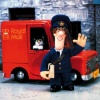
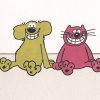
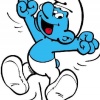
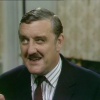
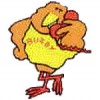
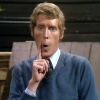
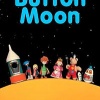

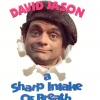
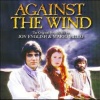
Do You Remember The Wombles?
Do You Remember The Wombles?